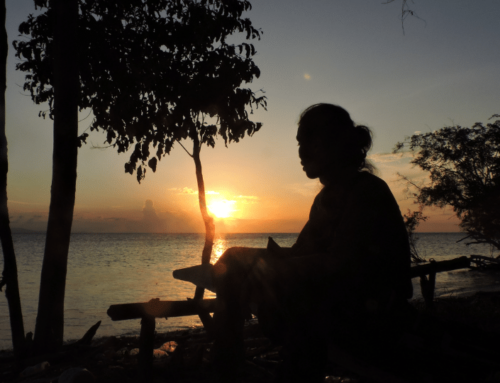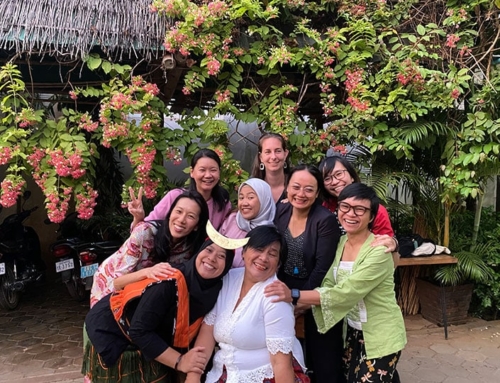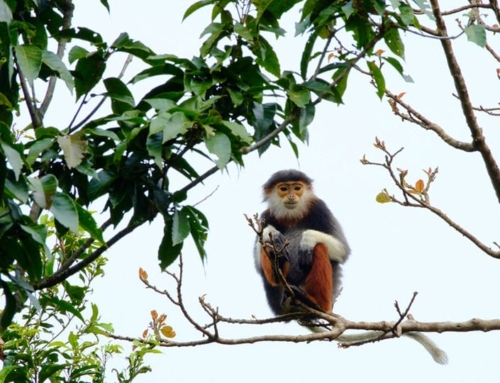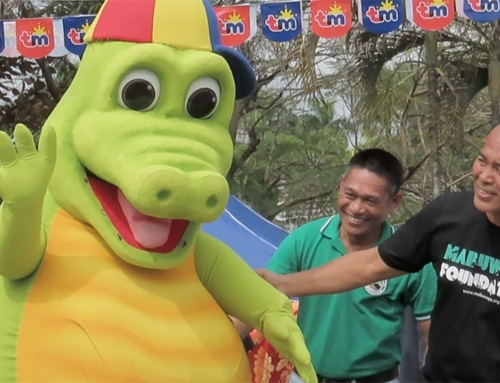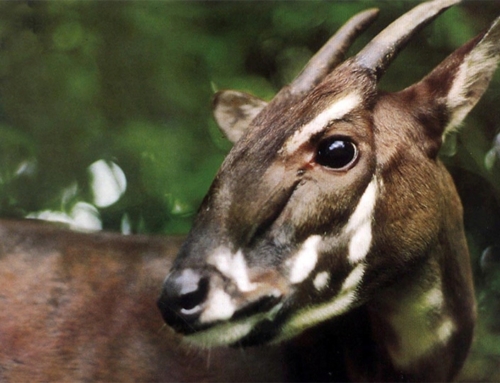The Visayan hornbill is a charismatic bird with a long decorative bill which looks like it has been carved by hand. It can only be found on two islands of the Philippines, where it is recognised as critically endangered on the national register so every breeding pair is vital for the future of the species. Matt Ward, Executive Director of the Talarak Foundation, tells the particularly touching love story from a special pair of hornbills in their reserve.
One of the key threats that has been driving the decline of the Visayan hornbill has been deforestation, with only tiny fragments of forest remaining on its home islands.
So when the Talarak Foundation were thinking about how to give this species the best chance at recovery in the wild, forest restoration had to be an important factor.

Penelope and Rudy were the first Visayan hornbills to be reintroduced into the wild from captivity, strengthening the wild population of this Critically Endangered species. © Talarak Foundation
Bayawan Nature Reserve
“This forest reserve is technically owned by the city of Bayawan, which is a small city on Negros island,” says Matt, “but they had very progressive viewpoints supported by their mayor and local government unit. They want to see the environment restored, and they want to see a change in the way in which the people see nature and natural resources,
“We jumped at the chance to work with them, and this government donated a 300-hectare area of land. It’s a relatively small, young forest, but it’s a starting point, and it has become the Bayawan Nature Reserve managed by the Talarak Foundation.
“We have replanted 60,000 individual trees, all species native to this area, and this is where we have been able to release several species from our breeding centre.”

Bayawan Nature Reserve is a 300-hectare area, a relatively small, young forest, but it’s a starting point for Talarak’s reintroduction programme. © Talarak Foundation
A family of hornbills
The Talarak Foundation’s breeding centre has been caring for growing captive populations of threatened species for more than a decade, becoming specialists in the intricate breeding behaviours of Visayan wildlife and building relationships with zoos across Asia, Europe, and America.
“But at some point, we have to think okay, our conservation of the species in captivity is going well. Next step- let’s see if we can get these animals back into the wild,” says Matt.
The Talarak Foundation successfully released several of the species from their centre into the Bayawan Nature Reserve: Visayan warty pigs, Visayan spotted deer, and blue-naped parrots. So, the team decided it was time to release a pair of Visayan hornbills called Penelope and Rudy.
“This was a pioneering activity for us as a foundation, but also for the species, as no one had tried to reintroduce this species back into the world before.
“So, we brought Penelope and Rudy to the Bayawan Nature Reserve and started with an acclamation phase in what we call a soft release enclosure. As they were acclimating to the environment, they were able to bond with each other in their aviary, and that was when their love story bloomed. We watched them as they started feeding each other and sharing presents, before we opened the aviary to allow them to explore and settle in their new forest home”.
“But then disaster struck. In late 2021, a super typhoon hit Negros Island, one of the biggest we’ve seen in decades. It ravaged the forests, it ruined houses, it caused a lot of mortalities. It was a very sudden and shocking event for all of us.”
“But the hornbills survived, and not only did they survive, but they thrived. They connected even stronger during this period, and they very quickly started breeding.”
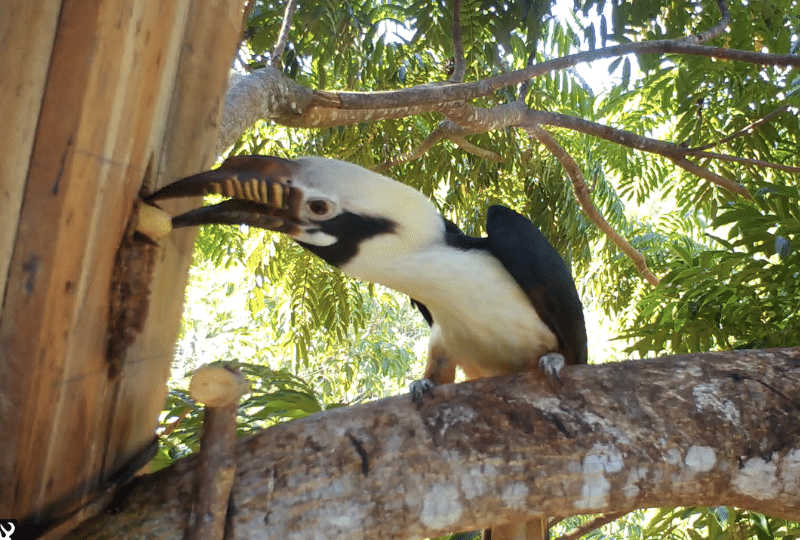
Female hornbills are entirely dependent on their partners to provide food for them and their chicks, receiving food through small holes in their tree hole or nest box. © Talarak Foundation
Born against the odds: Henry the hornbill
Hornbills have unique nesting behaviour that relies on large, old trees with big cavities. Once the pair have found a suitable tree hole, they seal the female inside by plastering the entrance with sticky materials such as mud, droppings, wood shavings, and saliva, leaving only a narrow slit for the male to bring her and the chicks food.
But in a young forest without old, cavernous trees, hornbill pairs like Penelope and Rudy need extra help in finding a suitable nesting site. The Talarak Foundation has developed nest boxes specially designed to mimic the ideal cavity conditions, and one such box in the Bayawan Nature Reserve led to the successful fledging of Henry the hornbill.
However, another tragedy befell the young hornbills when our proud new father Rudy died on a dark and stormy night, falling victim to one of the reserve’s natural predators.
“We were heartbroken,” says Matt. “The local community had come to love these hornbills, they learned their names, they had learned their story. They were heartbroken too.”

Henry the hornbill is doing well in the Bayawan Nature Reserve. © Talarak Foundation
Hope for the future
But the successful release had attracted other hornbills to the reserve. Before long, Penelope had attracted another male hornbill who had flown potentially dozens of kilometres to bond with her.
“Our story from this point, is one of just continued success. Henry is now growing older, and he has his own lady friend we have released to bond with him. Our local government personnel and local community have taken the hornbills to heart as local celebrities and they get super excited every time they see them, as do we. Every year they are breeding successfully, and just two months ago, Penelope and her new partner had two new beautiful chicks come out of one of our nest boxes.”
Supporting partners’ work engaging local communities and prioritising Southeast Asia’s unique and highly threatened species are core pillars of our Asian Species Programme.
To find out how you can become a supporter of the programme, please get in touch.


